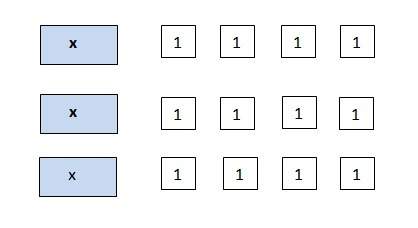
Mathematics, 12.11.2020 04:40 ddmoorehouseov75lc
Drawer of loose socks contains 2 red socks, 2 green socks, and 6 white socks. Which best describes how to determine the probability of pulling out a white sock, not replacing it, and pulling out another white sock?
The probability that the first sock is white is (StartFraction 6 over 10 EndFraction) and that the second sock is white is (StartFraction 6 over 10 EndFraction), so the probability of choosing a pair of white socks is StartFraction 36 over 100 EndFraction = StartFraction 18 over 50 EndFraction.
The probability that the first sock is white is (StartFraction 1 over 10 EndFraction) and that the second sock is white is (StartFraction 1 over 10 EndFraction), so the probability of choosing a pair of white socks is StartFraction 1 over 100 EndFraction.
The probability that the first sock is white is (StartFraction 6 over 10 EndFraction) and that the second sock is white is (StartFraction 5 over 9 EndFraction), so the probability of choosing a pair of white socks is StartFraction 30 over 90 EndFraction = one-third.
The probability that the first sock is white is (StartFraction 1 over 10 EndFraction) and that the second sock is white is (StartFraction 1 over 9 EndFraction), so the probability of choosing a pair of white socks is StartFraction 1 over 90 EndFraction.

Answers: 2


Another question on Mathematics

Mathematics, 22.06.2019 01:00
Which of the following is equal to the rational expression when x is not equal to -2 or -6?
Answers: 2

Mathematics, 22.06.2019 02:00
Masons cell phone company charges $0.12 for every text message he sends plus $2.50 per month if mason sent 25 messages this month how much money does he owe the one with the correct answer and explanation gets 10 points and is marked as the brainliest answer
Answers: 1

Mathematics, 22.06.2019 03:00
The biologist has a second culture to examine. she knows that the population of the culture doubles every 15 minutes. after 1 hour and 15 minutes, her assistant found that 80,000 bacteria were present. a) what was the size of the initial population? b) predict the size of the culture at t=3 hours. what was the size of the population at 40 minutes? explain and justify your answers. c) create a graph of the population as a function of time. find an equation that can be used to predict the size of the population at any time t. d) examine the rate at which the bacteria culture is growing. how fast is the culture growing after 1 hour? after 1.5 hours? after 2 hours? use a time interval of h = 0.01 hours to estimate these rates. interpret these rates in terms of the context of the problem situation. how do these three rates compare?
Answers: 1

Mathematics, 22.06.2019 06:50
Sharina simplified the expression 3(2x – 6 – x + 1)2 – 2 + 4x. in step 1 she simplified within the parentheses. in step 2 she expanded the exponent.which is a possible next step
Answers: 2
You know the right answer?
Drawer of loose socks contains 2 red socks, 2 green socks, and 6 white socks. Which best describes h...
Questions



Mathematics, 03.06.2021 18:10

Mathematics, 03.06.2021 18:10



Mathematics, 03.06.2021 18:10

Social Studies, 03.06.2021 18:10


Mathematics, 03.06.2021 18:10


Advanced Placement (AP), 03.06.2021 18:10


English, 03.06.2021 18:10

Chemistry, 03.06.2021 18:10

Mathematics, 03.06.2021 18:10

Mathematics, 03.06.2021 18:10

Social Studies, 03.06.2021 18:10

Chemistry, 03.06.2021 18:10




